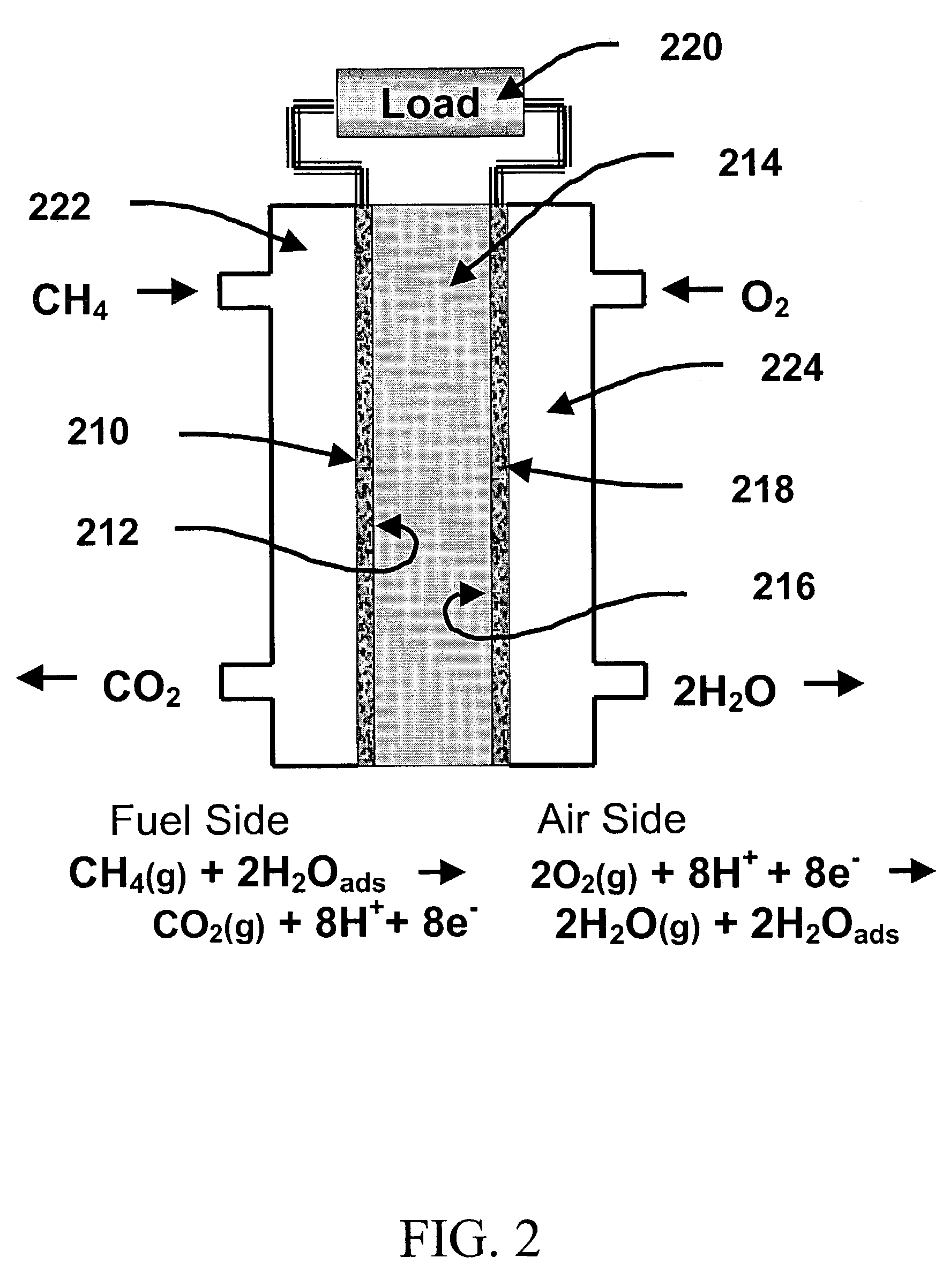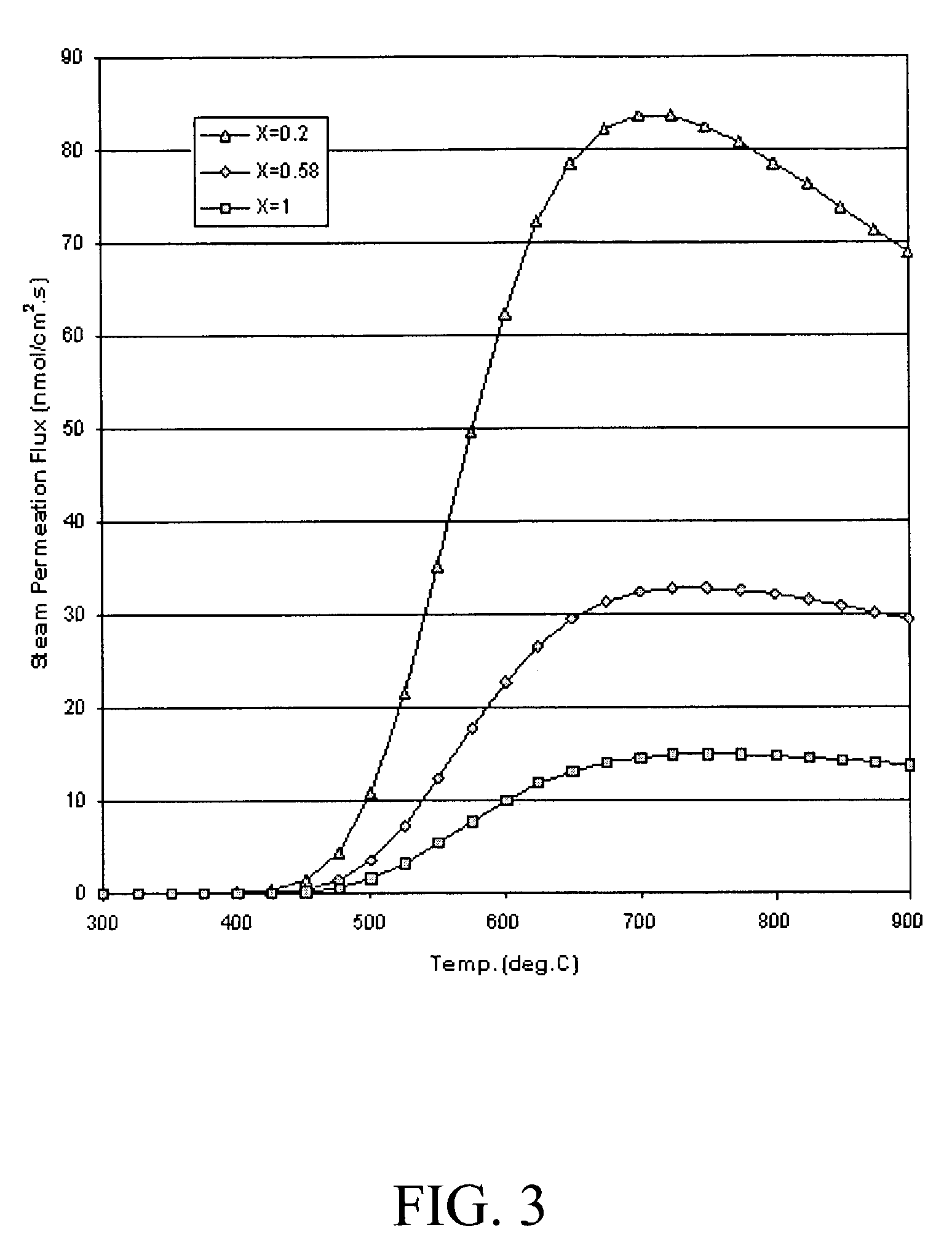Direct hydrocarbon reforming in protonic ceramic fuel cells by electrolyte steam permeation
a protonic ceramic and fuel cell technology, applied in the field of protonic ceramic fuel cells, can solve the problems of energy always being “lost” irreversibly, high temperature fuel cells operating directly on hydrocarbon fuels suffer from poor fuel utilization, and high temperature fuel cells are plagued by the propensity, etc., to reduce the propensity for hydrocarbons and reduce the flux of water molecules through the membrane
- Summary
- Abstract
- Description
- Claims
- Application Information
AI Technical Summary
Benefits of technology
Problems solved by technology
Method used
Image
Examples
examples
[0049]A series of experiments were performed that involved measuring the current and voltage of single cells as a function of temperature and elapsed time with various hydrocarbon fuels. The cells were typically operated at temperatures ranging from 600° C. to 850° C. Numerous cells were tested with different electrolyte thicknesses and electrode metals, but otherwise nearly identical construction. In all of the experiments, the cells consisted of an anode, a cathode, and a 23 millimeter diameter 10% yttrium-doped barium cerate, BCY10, ceramic electrolyte disc. The electrolyte thickness ranged from 0.2 millimeters to 1.0 millimeter. All of the cells tested were of the electrolyte-supported type.
[0050]A detailed description of one of the experiments, that is typical of many other experiments performed is as follows: A disc of BCY10 protonic ceramic electrolyte was prepared by the traditional powder compaction and sintering method, using powder obtained from Praxair Specialty Ceramics...
PUM
| Property | Measurement | Unit |
|---|---|---|
| ionic transference number | aaaaa | aaaaa |
| temperature | aaaaa | aaaaa |
| protonic conductivity | aaaaa | aaaaa |
Abstract
Description
Claims
Application Information
 Login to View More
Login to View More - R&D
- Intellectual Property
- Life Sciences
- Materials
- Tech Scout
- Unparalleled Data Quality
- Higher Quality Content
- 60% Fewer Hallucinations
Browse by: Latest US Patents, China's latest patents, Technical Efficacy Thesaurus, Application Domain, Technology Topic, Popular Technical Reports.
© 2025 PatSnap. All rights reserved.Legal|Privacy policy|Modern Slavery Act Transparency Statement|Sitemap|About US| Contact US: help@patsnap.com



